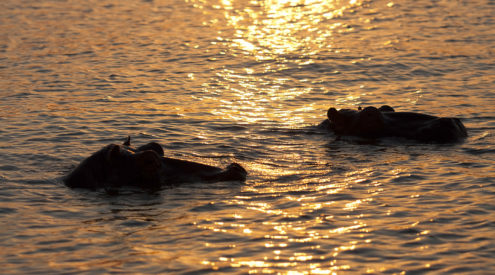More than 2 500 kilometres of South Africa‘s borders are edged by ocean. From this dramatic and varied coastline, we gaze out over a horizon of water with its surface seemingly devoid of life. But peer intently, and you’ll see it’s a wild seascape, rippling with birds.
The birds that live on the open ocean are called pelagic species. They feed predominantly on planktonic crustaceans, squid and fish and they rarely venture to land except to breed. They may be found thousands of kilometres from shore and many are powerful fliers that can remain aloft for hours; they rest by floating on the water. Some species, such as the sooty tern, have been recorded staying at sea for up to 10 years at a stretch, a truly remarkable example of adaptation to a harsh environment and a celebration of the mastery of the air.
There is a great diversity of species filling every niche of this complex ecosystem. From the smallest of seabirds such as the bat-like Wilson’s storm-petrels, flitting about, hovering and gleaning food from the surface of the swell, to the majestic, great wandering albatrosses with vast wings that never seem to flap as they glide on the wind.
Then there are the scavengers, such as the sub-antarctic skuas that roam opportunistically, feeding on fi sh offal and chasing away birds to steal their hardearned meals. This behaviour is called kleptoparasitism.
To really experience the spectacle of pelagic birds you need to brave the ocean wave off the coast. Numerous bird-tour operators will take you out to sea in search of fishing vessels, behind which hundreds of birds gather, feathering the sky, awaiting the catch of the day. On these adventures, it’s not uncommon to see a few species of albatross, sooty shearwaters, Cape gannets and many more, not to mention the odd whale or dolphin too.
Don’t despair if you don’t have your sea-legs, as there are many coastal birds you can enjoy from land. A careful scan across a bay will reveal various species of gulls, terns and cormorants and, with a spottingscope, you might even find the odd albatross drifting on the skyline (the shy albatross is common off the Cape coast and you can sometimes spot the Indian yellow-nosed albatross off the north-east coast).
Did you know?
- The wingspans of the wandering albatrosses (genus Diomedia), exceeding 3,4 metres, are the largest of any bird.
- All petrels are members of the family Plocellariformes or tubenoses. A small tube-like structure in the top of the bill is connected to an organ called the salt gland in the bird’s forehead that filters salt from seawater. They’re able to drink seawater as the gland acts like a desalination tank, concentrating and expelling the salt.
- Shearwaters are members of the petrel family and have long, pointed wings used to “˜shear’ gracefully over the surface of the ocean looking for food.
Save our seabirds
With the huge demands of a bourgeoning human population, our oceans are under tremendous pressure from over-fishing and dwindling fish stocks. This situation as well as the use of inappropriate long-line fishing methods, where thousands of birds get caught on the hooks and die, threaten the survival of seabirds and many species are in danger of extinction.
BirdLife South Africa’s Albatross Task Force is a world leader in developing mitigation measures by working intimately with the fishing industry and government to save our seabirds.
For more information, visit www.birdlife.org.za
Photograph by Rachel Robinson

















